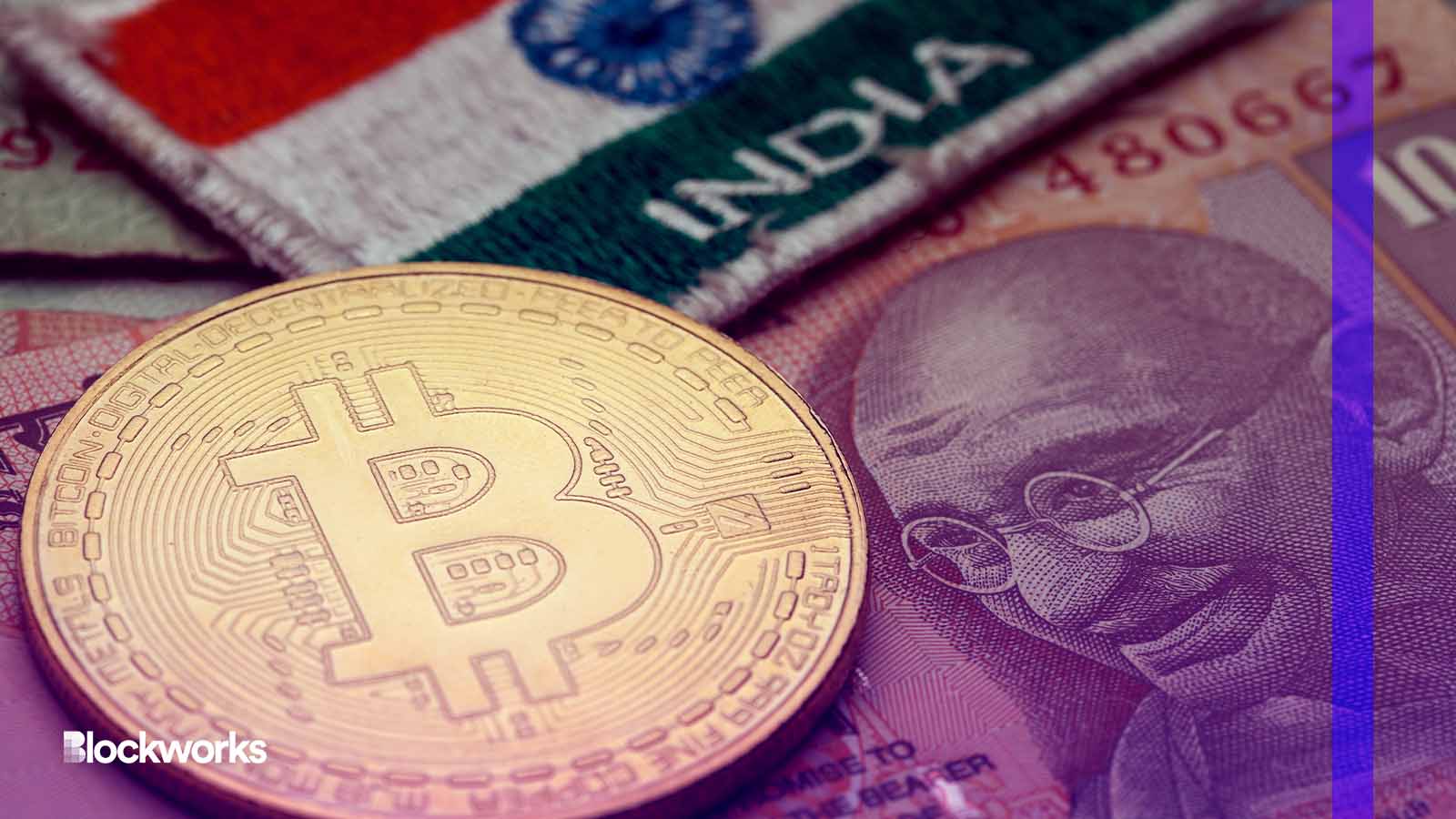Chainalysis: India leads world in ‘grassroots crypto adoption’
Though global grassroots adoption is well off its all-time highs, the data shows relative strength in parts of Asia and Oceania, as well as in lower middle income countries

Cryptographer/Shutterstock modified by Blockworks
India leads the world in so-called “grassroots crypto adoption,” according to a Tuesday report by Chainalysis — metrics that look beyond raw transaction volumes.
Though such global adoption is down considerably from all-time highs, the data suggests resilience in the Central and Southern Asia and Oceania (CSAO) region and in lower middle-income nations.
Chainalysis’s Global Crypto Adoption Index seeks to identify countries where the most people are putting the greatest share of their wealth into cryptocurrency.
The firm analyzes the data of 154 countries across five sub-indexes. These include on-chain crypto value and retail value received at both centralized exchanges and DeFi protocols, as well as peer-to-peer exchange trade volume.
It then weights the rankings by population size and purchasing power and takes the geometric mean of each country’s ranking in all five areas.
Adoption in India despite tax regime
Chainalysis’ Global Crypto Adoption Index has India at the top, as it ranked in the top five across categories such as use — by estimated transaction volume — of centralized and decentralized exchanges, as well as lending protocols and token smart contracts.
The country has also become the second-largest crypto market in the world by raw estimated transaction volume, beating out several wealthier nations, according to the report.
The ranking comes despite India opting to impose high capital gains taxes on crypto profits earlier this year. Higher than most countries, the 30% tax on crypto gains is more than its tax rate on other investments, such as equities.
The country’s central bank governor more recently compared them to speculative gambling activities. But Indian Prime Minister Narendra Modi called for an international framework to govern cryptocurrencies at the B20 summit last month. He noted “not only crypto, but all emerging technologies need a global framework and regulations.”
Aside from India, Chainalysis identified five other countries from the CSAO region in the top 10: Vietnam, the Philippines, Indonesia, Pakistan and Thailand.
The Philippines — captured by NFT-based video game Axie Infinity — has about 20% of its crypto-related web traffic going to gaming and gambling platforms. Pakistan and Vietnam see a higher share of activity happening on peer-to-peer exchanges.
DeFi became more prevalent in the region over the past year, accounting for about 56% of transaction volume between July 2022 and June 2023 — up from 35.2% in the previous 12-month span. Nearly 70% of that volume came in transfers valued at $1 million or more — up from 58% in the prior year period — signaling greater institutional adoption.
Lower middle income countries show stronger adoption recovery
The rankings come as crypto market volumes have been down substantially of late.
While bitcoin (BTC) and ether (ETH) prices have risen year to date, they are down approximately 64% and 68% respectively from their all-time highs in November 2021.
“While there’s been a marked recovery since the doldrums of late 2022, around the time FTX imploded, grassroots adoption is still well off its all-time highs,” the report states.
But lower middle income (LMI) countries — a classification defined by New World Bank — is the only category in which total grassroots adoption is above where it was in the third quarter of 2020.
About 40% of the world’s population live in lower middle income countries, encompassing nations like India, Nigeria and Ukraine. They are often countries with growing industries and populations, the report notes.
“If LMI countries are the future, then the data indicates that crypto is going to be a big part of that future,” Chainalysis adds. “That, combined with the fact that institutional adoption — primarily driven by organizations in high-income countries — continues to gain steam even during the ongoing crypto winter, paints a promising picture of the future.”
Get the news in your inbox. Explore Blockworks newsletters:
- The Breakdown: Decoding crypto and the markets. Daily.
- 0xResearch: Alpha in your inbox. Think like an analyst.






